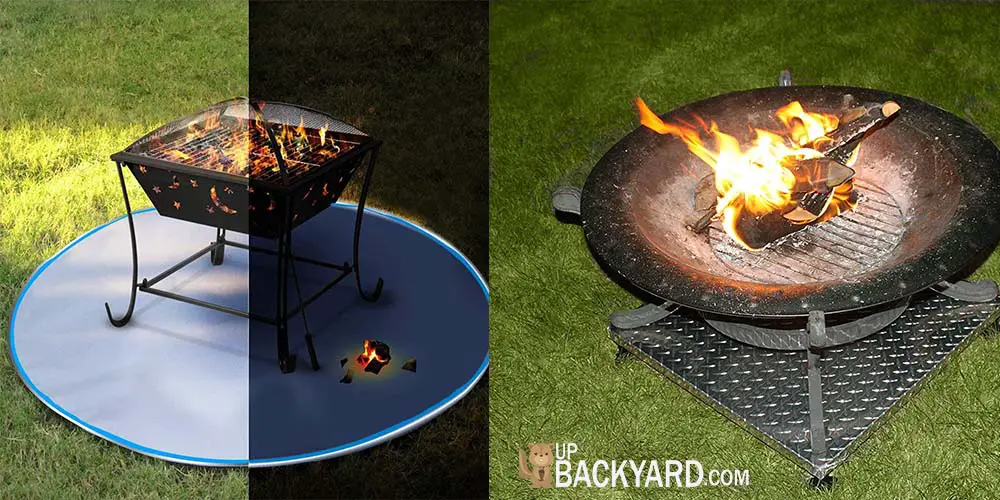Do you have this great idea of having your friends over for dinner and sitting out in your backyard for a fireside chat? Are you thinking about having a fire pit but don’t know where to put it and how to install one?
Would you like to experience the warmth from a fire right in your own backyard? However, are you worried about damaging your grass?
There’s nothing like cool summer nights while sitting outside on your property with family and friends having a cup of your favorite coffee roast in front of a crackling fire. Throw in a few marshmallows, and your campfire fun is complete. The good news is, you can enjoy these pleasures without having to leave your backyard and not worry about burning your grass as well.
But then, fire is fire. It can still quickly burn your grass in as much as you stick your forefinger in it. An improperly installed firepit can actually damage your lawn that may take weeks, if not months, to recover.
A fire pit can burn as hot as 1,200 F and may really scorch and wilt the surrounding grass. It is important to install the necessary precautions and materials to protect surrounding greenery, whether portable or fixed stone implements.
What You Can Get From This Guide?
We put together this guide since I, too, am careful about damaging my precious grass in my own backyard while having a good time with my spouse and kids eating.
Yeah, you guessed it, roasted marshmallows. We hope that you will use this information first and foremost to avoid any accidental fire anywhere on your property.
We want to save you the headache of having to spend time and money repairing your lawn when you can proactively protect it and, at the same time, enjoy that intimate camping atmosphere that a firepit brings.
This goes for all homeowners who want the benefits of a fire pit without the problems that heat stress can bring.
What to Put Under a Fire Pit on Grass?
If you are looking to use a portable fire pit, the simplest way to protect your grass from scorching is to place a barrier right below the pit.
We recommend that you use the following materials (but not limited to) as barriers between the intense radiant heat from the pit going down to your precious lawn grass.
Brick Pavers or Patio Slabs
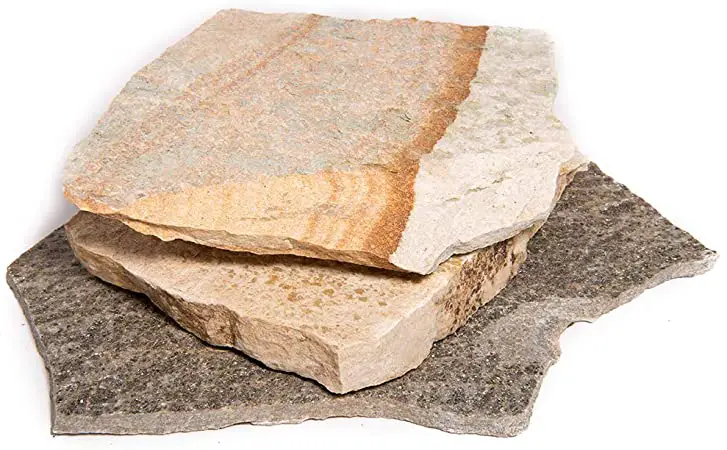
One of the simplest and the most inexpensive ways of protecting your grass from radiant heat is to place patio slabs under the pit. They are flat, stable, and can readily absorb heat without transmitting it to the grass.
They also make for a great base distributing the weight of the fire pit, keeping it stable, and not crushing the grass underneath.
One thing to keep in mind, though, if the slabs are left for more than two days on the same spot, they can leave ghost prints and eventually damage the grass.
If you can, at any rate (make sure that the pit is cool before handling), move the pit from one place to another if you plan to use it for several days consecutively.
Fire Pit Mat
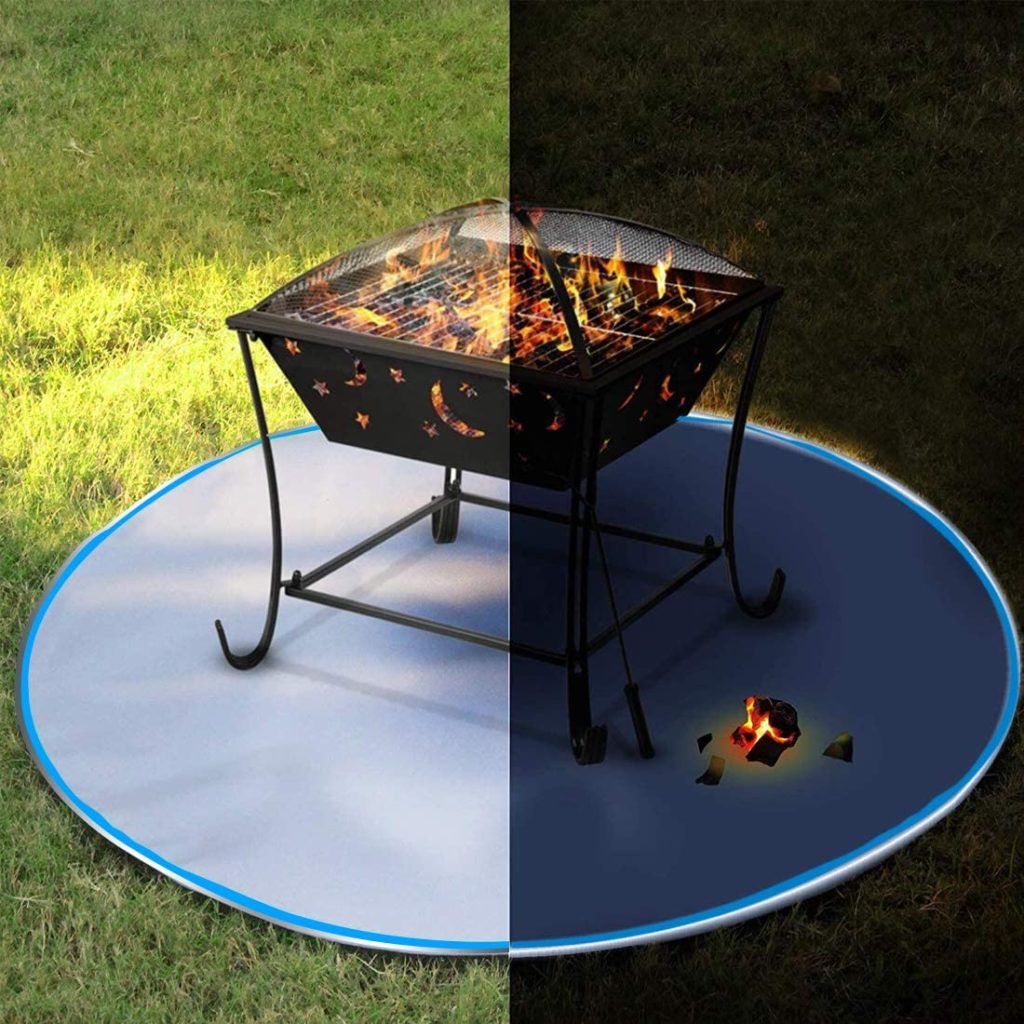
This fire pit mat is round in shape and has double aluminized surfaces. This type of mat will protect your grass from both sides. It is thin, foldable, and portable. It can be used with either propane-fueled, gas, or wood-burning pits.
Always remember that the side facing up the pit is the shiny aluminum side. The dull mat gray side faces the grass.
The fire pit mat is fire-resistant and waterproof, and convenient to use. This item is perfect for a fire pit with a leg base, wherein all you have to do is slip it underneath to protect your grass from radiant heat.
Its recommended distance between pit bottom and pit mat is 4 inches.
Firepit Pad Deck Protector/ Heat Shield
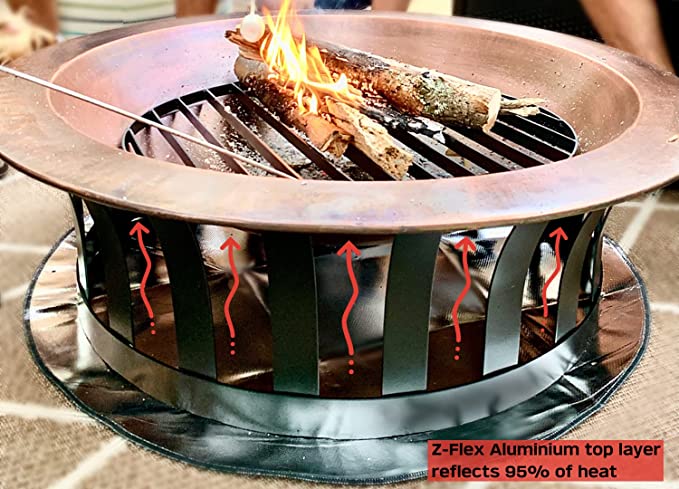
Constructed from military-grade materials and used by aircraft firefighters, this multi-layered fire pit pad is designed to protect both wooden deck and grass.
It is made out of multiple layers of industrial-strength fabrics, and it can deflect as much as 95% of heat while the material itself keeps cool. According to the manufacturer, both exteriors are aluminized for excellent heat protection.
This pad is recommended to be placed 6 inches below the fire pit to keep your grass safe. It is important to remember that this item is an extreme heat barrier and not a fire retardant. Immediately remove embers or hot ash from the aluminized cover to prevent damage to the fabric.
Grass Guard/ Fire Pit Heat Shield
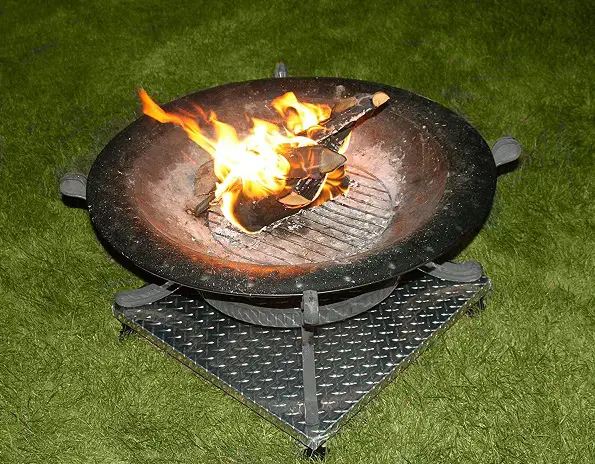
A fire pit heat shield is constructed to make air space between layers to create an insulating effect. The grass guard is a composite of metal and heat resistant materials that are elevated to protect your grass simply by placing your portable fire pit on it. No assembly is needed.
The grass guard fire pit must be on level ground to avoid spilling or tipping onto the grass. Look into the surrounding areas close to where you have a fire, and there must be a good distance between the pit and any nearby structures, whether flammable or not.
The Types of Causes of Damage to Your Grass
Heat Stress
Your lawn grass faces all kinds of heat stress, both tolerable and damaging. This happens especially during the summer.
Heat stress can cause slow growth and overall weakened health of your grass. As a result, your grass becomes a target for pests and is likely to be overrun by weeds. This type of heat can be managed and is readily survived by better types of grasses.
On the other hand, extreme heat stress caused by scorching from a fire pit is a different story. Grass can burn and die within minutes, which could take weeks, maybe a month or two, to repair and regrow.
The problem begins and ends with a fire burning right on top of your grass. It is easy to think that this is no cause for worry, but radiant heat doesn’t just travel upward. It can reach down too, ultimately killing vegetation, including your precious grass.
Ghost Prints
Also called compression, this type of damage causes the grass to lay flat due to pressure from something lying directly on top of it for an extended period of time.
It subsequently makes it difficult for the grass to pop back up and grow. What you get is flattened, discolored grass that will eventually die off and leave bald spots on your yard.
Safety First
When installing a fire pit and protecting your grass, you will have to consider safety first and at all times. It’s better to learn from the beginning and do what is necessary to prevent learning born out of accidents, property damage, and possible physical injury.
Keep Distance From Structures
Your fire should be 20-25 feet away from any structure within your yard, especially ones made out of flammable materials like the tool shed or even the house itself.
Keep the pit at least 15 feet away from trees, and be aware of long branches that may be overreaching enough to catch fire.
Always have a fire extinguisher on hand. Make sure that it is a multi-purpose type of fire extinguisher designed to take on any burning material, whether wood, plastic, paper, oil, or other flammable materials. Make sure to put out the fire before it goes out of control.
Use Spark Screen
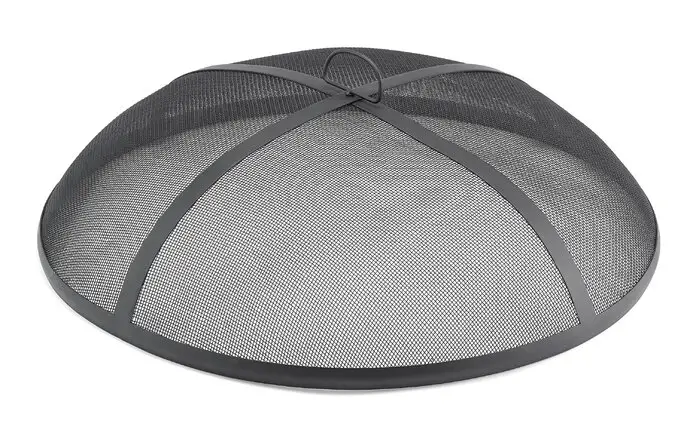
Once you have your fire going and already have a shield installed underneath, you may want to add a spark screen cover.
It is essentially a mesh device usually made out of rugged steel design to prevent stray sparks and embers from popping onto any nearby person or object. This will prevent burns and fire accidents in the case of flammable materials.
Community Rules
Before deciding on installing a fire pit, you may also want to know if your community allows open fires.
If so, you will also want to find out the limitations and rules about the distance between your fire and structures.
Let your insurance agent know you will be building a fire pit, and see if they recommend declaring it in your premium.
More Safety Tips
- Do not leave a fire pit unattended.
- Check the children and small animals that might get too close to the fire.
- Have a log grabber handy for easy turning over of wood.
Before lighting the fire, you will want to sprinkle or mist the surrounding grass on the whole area around the pit as well. This will prevent or at least minimize heat stressing the surrounding grass. You don’t have to soak it through.
Otherwise, you will have soggy, slippery, and unstable surroundings in your fire pit. Just keep your hose nearby, just in case you may have to reapply water.
A slow burn would be better than using lighter fluid to create a fast burn if you can. Let the wood catch fire naturally and let flames slowly build with hot coals beneath it.
You can also check out the market for fire starter products that offer safe and nice flames that you can enjoy.
When done using the fire pit, put out the fire with water and stir contents until ash is saturated.
Frequently Asked Questions (FAQs)
Can a fire pad also protect grass from propane-fueled fire pits?
Yes, it can. Always remember to maintain the 4 inches distance between the heat source and the fire pad.
Some recommend putting sand at the bottom of the pit. Why is that?
Adding sand to the bottom of the pit helps in the even distribution of heat, as it also delays, if not protects, the bottom of the bowl from early corrosion due to extreme heat exposure.
Sand at the bottom of the pit can also serve as added insulation (although not full) from radiant heat coming from the fire itself going down to the barrier before the grass.
I recommend that you always read the manual first before assembling your portable fire pit.
Will a size 24" fire pad still work well with a 36" fire pit?
Yes, it will. The concentration of heat is in the center, so it should cover and protect the grass beneath it adequately. However, you will want to monitor along with the edges of the pad and see if it gets too warm.
Otherwise, you can always get a larger size fire pad if you are in doubt. But, it should function just as well.
How can I help my grass recover after I use my fire pit with the barrier?
- Block the area to temporarily stop foot traffic to let your grass breathe and pop back up.
- Hydrate the grass to accelerate recovery
- If need be, seed the area where bald spots have been created to regrow the grass.
Final Thoughts
At this point, you may already have acquired adequate knowledge to safely enjoy your fire pit without the hassle of damaging your grass.
Here are a few pointers on how you can go about making sure you take care of your lawn while having fun and keeping warm with friends and family.
- Know the Community rules and safe distances on where and where you can have an open fire in your area.
- Read the manual before assembling and installing your fire pit.
- Mist your surrounding grass before installing the barrier and lighting the fire.
- Choose a barrier that can fit well in your budget and your purpose.
- Keep in mind that a multi-layer fabric barrier is not a fire retardant and is only fire-resistant. So, immediately remove embers and ashes that fall into it.
- Remember to use a spark screen to prevent burn injuries.
- Use water to put out the fire before retiring for the night. Mix it well with ashes.
- Let the fire pit cool off overnight before attempting to disassemble it and removing the barrier.
- Clean off the barrier mat or pad and rehydrate your grass.
Enjoy and be safe!
